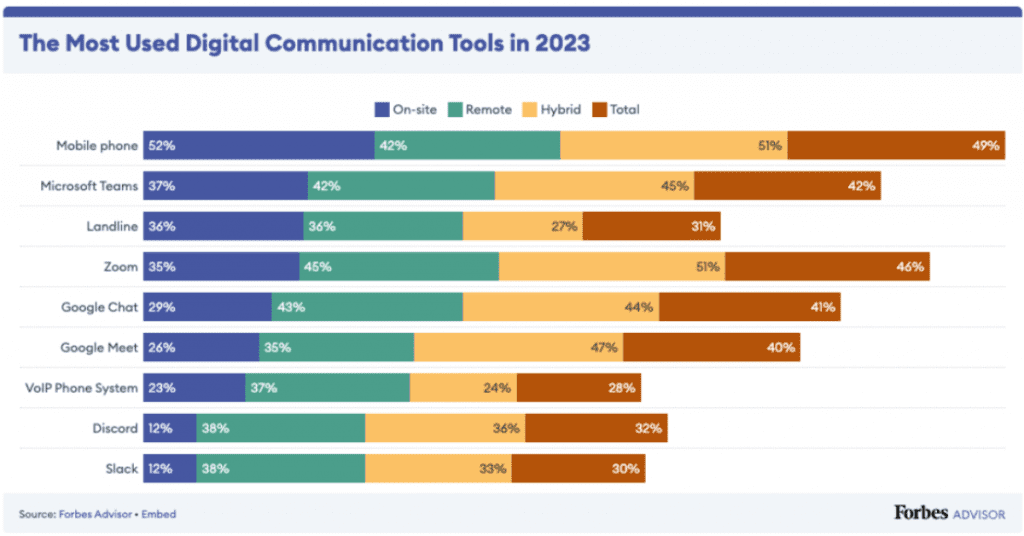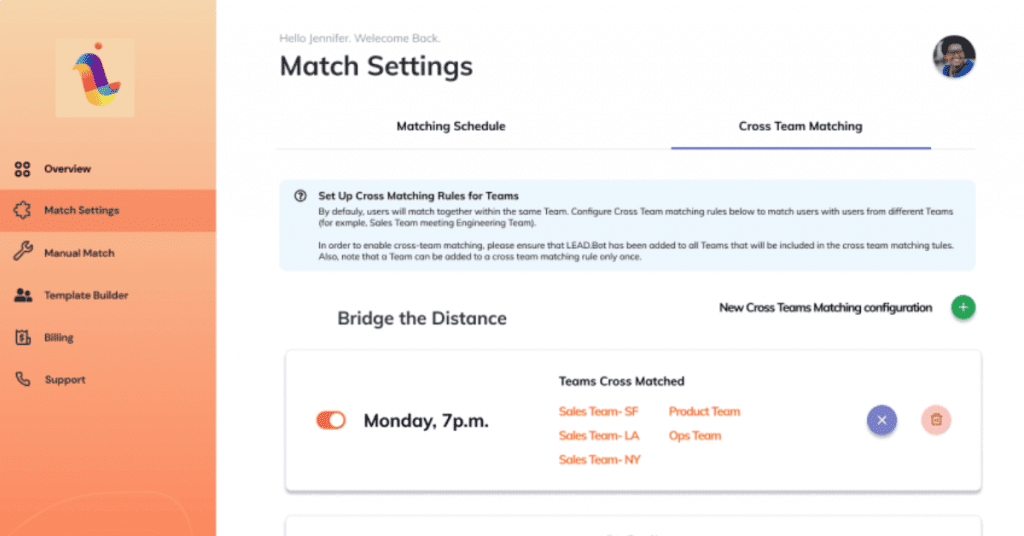In the wake of the COVID-19 pandemic that reshaped global workplaces, recent data from Pew Research Center reveals notable trends in remote work. While 55% of eligible workers were working remotely in October 2020, this figure has seen fluctuations: decreasing to 43% in January 2022 and further to 35% by 2023. Notably, this is a significant rise from a mere 7% prior to the pandemic.
Hybrid work models, which combine both remote and on-site work, have become a prevalent solution. The latest figures indicate 41% of workers capable of working remotely now adopt this mixed mode, a rise from 35% in early 2022. Among these hybrid professionals, 63% have employer-imposed in-person work requirements. Interestingly, 59% work from home at least three days a week, with the rest primarily working from home two days or less.
Employee preferences are also shifting. One-third of workers, who primarily operate from home, would opt to maintain this full-time remote approach if given a choice. From those currently in hybrid setups, 18% wish to work exclusively from home, and 32% would prefer to do so most of the time.
In this evolving landscape, it’s critical for businesses to adapt. At LEAD.bot, we understand the dynamics of communication, especially in decentralized teams. Navigating the challenges and nuances of virtual interaction is more crucial than ever. By understanding the essence of virtual communication and addressing potential obstacles, companies can ensure their teams remain cohesive and effective, irrespective of their physical workspaces.
What is Virtual Communication?
Virtual communication denotes the practice of engaging with individuals either online or remotely, spanning interactions from client consultations to team meetings, facilitated via the internet or phone calls.

Effective communication is the cornerstone of all professional endeavors. Businesses must articulate expectations, provide updates, and convey their overarching vision to stakeholders.
However, many grapple with effective communication even in face-to-face settings. Translating these challenges to a virtual environment, where non-verbal cues are absent, often exacerbates misunderstandings.
For instance, exchanges on instant messaging platforms or project management tools, typically text-based, can make discerning context challenging. A misaligned team might find members duplicating efforts or, worse, conflicts might arise from simple misinterpretations. Given the centrality of communication to organizational success, mastering the art of virtual dialogue is paramount.
Why is Virtual Communication Crucial in Hybrid Work Settings, and How does it Facilitate Collaboration among Fully Remote, Semi-remote, and Predominantly In-office Workers?
Hybrid work models, which involve a mix of in-office and remote work, have a unique set of communication challenges and benefits. Here’s why virtual communication is crucial for hybrid work and the need to bridge the gap between fully remote, partially remote, and predominantly in-office workers:

Consistency and Cohesion. In a hybrid work model, employees may not be working in the same physical space or even during the same hours. Virtual communication ensures that there’s a consistent platform for everyone to collaborate, discuss, and share information, irrespective of their location or work schedule.
Leveling the Playing Field. There’s a risk in hybrid models that those in the office might have better access to information or more spontaneous discussions than those who are remote. By prioritizing virtual communication, companies can ensure that all employees, regardless of their work location, have equal access to discussions, information, and opportunities.
Flexibility and Inclusivity. Virtual communication tools allow for a more flexible approach to work. Meetings can be recorded for later viewing, and asynchronous communication can be prioritized, ensuring that even those with varying schedules or in different time zones are included.
Building and Maintaining Culture. One of the significant challenges of hybrid work is ensuring a unified company culture. Virtual communication platforms can host team-building activities, casual chats, and other events to ensure everyone feels part of the company culture, irrespective of their physical location.
Bridging Knowledge Gaps. The experience of an entirely remote worker can be different from someone who comes to the office occasionally. Virtual communication tools can be platforms for knowledge sharing, ensuring everyone is on the same page regarding company updates, project progress, or any other vital information.
Efficiency and Productivity. With employees scattered in various locations, virtual communication can streamline workflows. Tools that facilitate task management, project updates, and instant messaging can enhance productivity, making sure everyone knows their roles, responsibilities, and deadlines.
Addressing Misunderstandings. The lack of face-to-face interaction in hybrid models can sometimes lead to misunderstandings. Virtual communication, when done right with video calls and other visual aids, can help clarify doubts, ensuring that everyone has a clear understanding of tasks and expectations.
Why is Effective Virtual Communication Crucial from a Financial Standpoint?
The implications of poor communication stretch beyond just strained relationships—it can have tangible financial consequences for businesses. For instance, larger enterprises, with upwards of 100,000 employees, face potential losses of up to $62.4 million annually due to communication gaps.
Furthermore, a study by David Grossman highlighted that even for compact firms, the repercussions are significant: companies housing around 100 employees can witness a deficit of $420,000 annually, all attributed to subpar communication.
However, the challenge intensifies in remote or hybrid settings. As data suggests, 45% of workers feel that lackluster communication diminishes trust—both in leadership and within teams. This sentiment is more pronounced among remote employees: 54% assert that inadequate communication tarnishes trust in leadership, while 52% believe it affects inter-team trust. Comparatively, on-site workers do feel the strain, albeit slightly less: 43% feel their trust in leadership wanes, and 38% see a decline in team trust due to communication issues.
The inherent challenges of virtual communication, such as feelings of isolation among employees, are accentuated in larger organizations where ensuring every voice is heard becomes complex. Yet, establishing excellent communication is paramount. In diverse organizations, tapping into collective wisdom is essential. By doing so, businesses can foster innovation, enhance problem-solving, and thrive in today’s digital landscape.
Understanding Virtual Communication Challenges
To effectively address an issue, we must first identify its nuances. Here are some hurdles faced in virtual team interactions:
Navigating Time Zone Differences
Remote work’s beauty lies in its global reach, enabling recruitment from anywhere. But this advantage comes with the challenge of coordinating communication across diverse time zones. For instance, a California-based team interacting with a colleague in the EU will grapple with significant time lags. Such differences can influence responsiveness and complicate meeting scheduling. Managers must evolve strategies to ensure such time disparities don’t hamper operations.
Monitoring Productivity Amid Distractions
A common reservation about remote work revolves around assessing team productivity. With employees outside a traditional office setting, ensuring consistent focus can be challenging. However, refining hiring processes to identify self-driven individuals and implementing productivity-tracking mechanisms can alleviate such concerns.
Decoding Non-Verbal Cues
A significant portion of our communication relies on non-verbal signals, making it a challenge in virtual settings. While face-to-face interactions provide clear cues about someone’s feelings or engagement, such insights are often muted or absent in digital formats.
Consider a video conference: gauging active participation can be perplexing. While in-person meetings might reveal distractions through wandering eyes or evident disinterest, these subtleties can easily go unnoticed on screen.
Optimizing Virtual Interactions
The growing inclination towards remote work mandates organizations to finetune their virtual communication strategies. Embracing best practices can help in bridging the inherent challenges and ensuring seamless operations.
Optimizing Virtual Communication for Better Outcomes
The trend is unmistakable: a significant number of employees have a preference for remote work, prompting organizations to refine their communication strategies to maintain seamless operations. Here are a few recommended practices for virtual communication:
Encourage Casual Virtual Interactions Working on-site naturally allows for spontaneous, informal conversations with colleagues, contributing immensely to team bonding and job satisfaction. Remote settings, however, tend to narrow communication down to strictly work-related matters.
To counter this, consider the following approaches:
- Create a ‘watercooler’ channel where team members can engage in light-hearted discussions about non-work-related topics.
- Organize relaxed virtual meet-ups for employees to better acquaint themselves with one another. LEAD.bot for Slack and LEAD.bot for Microsoft Teams streamlines this process by automatically matching employees for these virtual interactions, ensuring everyone gets an opportunity to connect over a metaphorical coffee or tea break.
Selecting the Right Virtual Communication Tools
The market offers an array of tools tailored for diverse communication needs. While some are comprehensive platforms catering to multifaceted communication channels, others are specialized for specific purposes.
Ensuring effective virtual communication often hinges on curating the right set of tools. Below is a varied toolkit to consider for different communication modes:
- Short, text-based asynchronous (AKA chat) communication: Microsoft Teams, Slack.
- Virtual coffee & donut meet-ups: LEAD.bot (integrated within platforms like Slack or Microsoft Teams) makes it simple to meet new “coffee pals” virtually.
- Video meetings: Microsoft Teams, Zoom, Skype, Slack.
- Long-form asynchronous communication: Email (e.g Microsoft 365, Google Workspace).
- Internal documentation: Notion, Google doc.
- Project management: Jira, Trello.
- Chat-based customer support: Hubspot. … and the list goes on.
Microsoft Teams and Slack: Preferred Tools for Enterprises and Startups in 2023

The landscape of workplace communication has evolved. While platforms like Google Meet and Zoom have gained traction for video conferencing, with 40% and 46% user preference respectively, Microsoft Teams and Slack emerge as top choices among enterprises and startups.
VoIP adoption has seen a surge, especially among remote workers at 37%. Microsoft Teams, known for its VoIP capabilities, has significantly benefited from this trend.
While on-site workers lean towards mobile phones (38%) and Zoom (21%) for communication, remote and hybrid workers display a diverse preference. Remote workers favor both Zoom and Google Chat (22% each), while hybrid workers lean towards Zoom (31%) and Google Meet (23%).
However, the versatility of Microsoft Teams and Slack, combining chat, collaboration tools, and integrations, sets them apart as holistic communication solutions, making them indispensable in the evolving work environment.
Anyway, your selection should align with your business requirements. Before committing, it’s wise to take advantage of free trials to familiarize yourself with the tool’s features and usability.
Offer Comprehensive Training on Tool Utilization
It’s a misconception in the HR realm to presume every employee is familiar with the nuances of every virtual tool. With the surge in remote work and the emphasis on employee engagement, it’s pivotal to provide clear guidance.
Once you’ve settled on a communication toolkit, prioritize equipping your staff with the knowledge to use it seamlessly. Consider creating screen recordings or drafting step-by-step guides. Additionally, referencing reputable online resources can offer added insights and clarity.
Standardize and Document Workflows
In a remote work environment, employees can’t simply lean over to a colleague for clarifications. Rather, it requires a more structured approach, like sending a message or scheduling a call. Therefore, having a well-structured, easily accessible process documentation becomes indispensable. It not only streamlines operations but significantly boosts employee engagement, as they feel more confident and less isolated in their roles.
Prioritize Purposeful Meetings with Clear Agendas
Meetings, especially in a virtual setup, can become notorious time-drainers if not conducted with precision. A primary reason for this inefficiency is the absence of a clear roadmap. To enhance the effectiveness of your virtual meetings, always outline and share a comprehensive agenda ahead of time. This ensures participants arrive well-prepared, making discussions more focused and productive.
Understand the Flexibility of Remote Availability
With the rise in remote work, it’s easy to presume continuous availability due to the blurred boundaries between work and personal life. But it’s essential to remember that while remote work often boosts productivity, it doesn’t mean employees are available round the clock. If you find yourself engaged in tasks beyond standard hours, resist the temptation to expect immediate responses from colleagues.
It’s also crucial to recognize that not everyone will constantly monitor communication platforms. Promote a culture where everyone checks for messages or updates at regular intervals – be it every half-hour or hourly, depending on job requirements.
Prioritize Regular Updates and Touchpoints
In a virtual setup, managing expectations and ensuring alignment can be challenging compared to a physical office environment. How do you ascertain everyone is aligned, and tasks are on track?
Consistent check-ins are the answer.
These brief touchpoints – ideally kept under thirty minutes – can serve as platforms for updating progress and discussing challenges. If you’re in a managerial role, consider having periodic one-on-ones with team members, fostering openness and ensuring clarity.
Embrace the Evolution of Virtual Communication
The landscape of work is changing, with remote operations becoming a mainstay. Instead of resisting this transition, the key lies in leveraging the right tools to simplify and enhance virtual interactions.

LEAD.bot is a prime solution, designed to foster connections among remote team members. Whether it’s collaborating over a virtual beverage or brainstorming, LEAD.bot ensures seamless interactions, bridging the virtual gap and enhancing team cohesion. Explore how LEAD.bot can utilize HR knowledge, leadership best practice, data, and AI to revolutionize your team’s communication dynamics!







